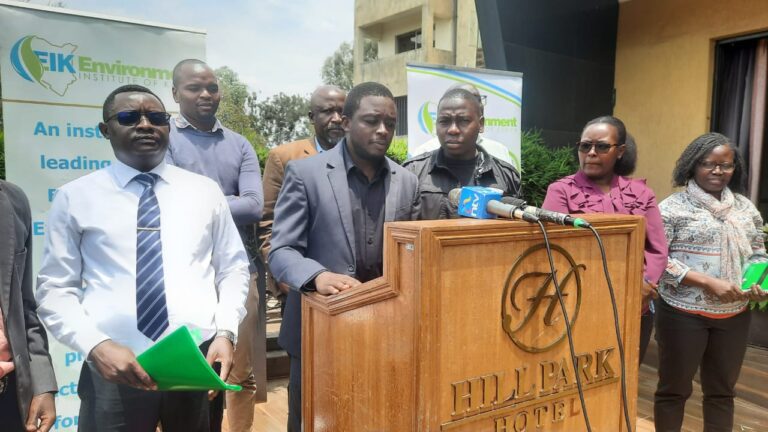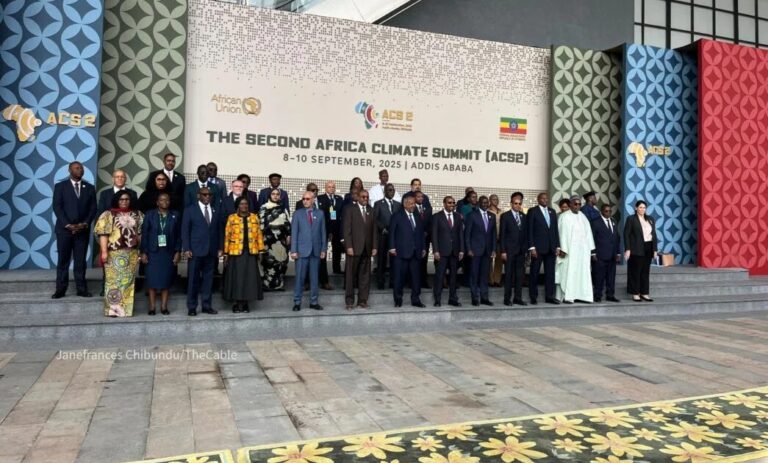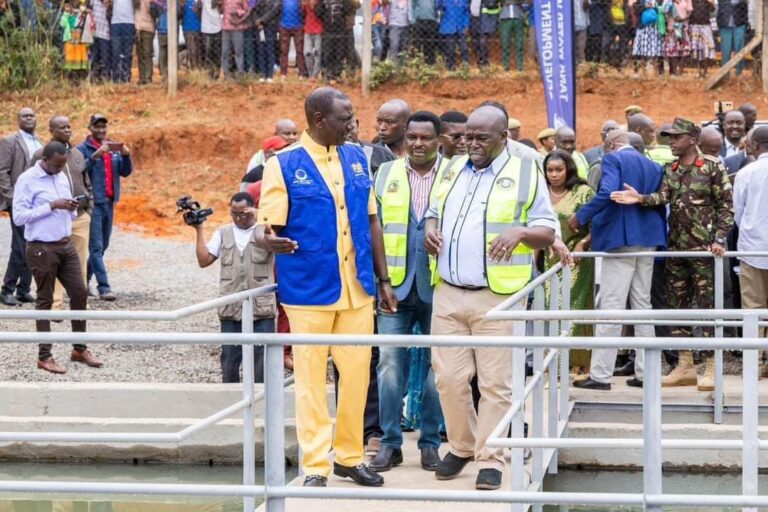
President William Ruto speaking during the launch of African Carbon Markets Initiative (ACMI). Photo/Courtesy
By Daisy Okiring | Nairobi, Kenya | August 28, 2025
Can carbon trading save the planet — or is it just a new scramble for Africa’s land? That is the question now confronting Kenya, where carbon credit deals worth billions of shillings are being signed with foreign corporations while local communities fear they are being left out of the promised benefits.
Kenya has positioned itself as Africa’s climate finance hub. In 2023, President William Ruto announced that carbon credits could generate up to $600 million annually by 2030, and the country has since signed multiple agreements with global companies seeking to offset their emissions. But as these deals grow, so do concerns about “carbon colonialism” — a system where wealthier polluting nations and corporations pay to continue polluting, while Africans surrender land and resources for little in return.
Kenya at the Center of a Global Race
Globally, the carbon credit industry is booming. According to the World Bank, voluntary carbon markets were valued at $2 billion in 2021 and could reach $50 billion by 2030. Africa, with its vast forests, grasslands, and renewable energy potential, is seen as the “final frontier” for offsets.
Kenya leads the continent with over 30 registered carbon projects, ranging from forest conservation in the Mau and Aberdare ecosystems to large renewable energy initiatives like the Lake Turkana Wind Power project. The government has even created a Carbon Credit Trading and Benefit Sharing Bill, aimed at streamlining regulation and ensuring communities benefit.
Yet, behind the numbers lies a troubling story. Who actually profits? And at what cost to the pastoralists, forest dwellers, and farmers whose lands are being turned into carbon sinks for foreign companies?

Communities Speak of Displacement
In Narok and Baringo, communities claim carbon deals are being signed without their consent. The Ogiek people of the Mau Forest, already subjected to repeated forced evictions, say carbon credit projects have worsened their insecurity. Despite a 2022 ruling by the African Court on Human and Peoples’ Rights affirming the Ogiek’s rights to the Mau, reports indicate continued demarcation and leasing of forest land to private investors under the guise of carbon trading.
“The irony is that while the world praises Kenya for climate leadership, the people who have protected these forests for centuries are being pushed out,” said Daniel Kobei, Executive Director of the Ogiek Peoples’ Development Program.
Read More: Treasury launches Ksh34 billion climate resilience programme
The Maasai in Kajiado and Laikipia have similar concerns. Some grazing lands have been fenced off under new reforestation schemes financed through carbon markets, disrupting their traditional livelihoods.

Global Praise, Local Pain
Kenya’s climate diplomacy has won applause on the world stage. At COP28 in Dubai, President Ruto urged rich nations to buy African carbon credits, declaring: “Africa holds the key to the world’s decarbonization.” His administration has since signed deals with the United Arab Emirates, British firms, and U.S.-based companies.
But critics argue these agreements prioritize foreign investors. According to Survival International, communities often receive less than 5% of revenues from carbon credit projects. The rest goes to project developers, brokers, and governments.
A 2024 study by the African Climate Foundation found that while Africa supplies about 20% of global carbon credits, it receives only a fraction of the financial benefits. The imbalance has fueled accusations of carbon colonialism — echoing earlier eras when Africa’s resources were extracted for global markets with little local return.
The Numbers Behind the Deals
Statistics paint a stark picture.
Kenya is home to over 200 million tons of potential carbon credits annually, according to government estimates. At current prices, this could bring in billions. Yet, voluntary market prices vary widely, from as low as $2 per ton for forest projects in Africa to over $20 per ton for technology-based removals in Europe and North America.
This pricing disparity means African nations like Kenya earn far less for the same climate service. “Why should Africa be paid $5 for storing carbon when the same credit sells for four times that in London or New York?” asked Mithika Mwenda, head of the Pan African Climate Justice Alliance.

Voices of Caution
International climate advocates have also raised concerns. Former UN Special Rapporteur on Human Rights and the Environment, David Boyd, warned in 2024 that poorly governed carbon markets “risk becoming a greenwashing tool for polluters while trampling on the rights of vulnerable communities.”
Closer home, Nobel Laureate Wangari Maathai once cautioned that forest conservation without community ownership is doomed to fail. Her words ring true today as forests like the Mau and Embobut become contested spaces between Indigenous peoples and carbon traders.
Meanwhile, some African leaders are calling for fairer frameworks. At the African Climate Summit in Nairobi (2023), President Ruto himself acknowledged that Africa must not be “locked into a carbon colonial order.” Yet his government’s aggressive push for carbon trading leaves many wondering if those words will translate into justice for locals.
Read More: Who really owns the forest? The Ogiek’s fight for survival
Kenya’s Legal Grey Zones
Part of the problem is weak regulation. Kenya only recently passed guidelines for carbon trading, and oversight remains fragmented. Civil society groups accuse officials of signing opaque agreements with little transparency.
The Ministry of Environment insists a new Carbon Trading Bill will mandate that 40% of revenues go to communities, but critics fear loopholes will allow powerful actors to capture most of the benefits.
A past scandal in the Kasigau REDD+ Project in Taita Taveta revealed that while millions of dollars were raised in carbon credits, locals complained of receiving only minimal social projects. “The roads and schools are good, but what about the land we lost?” one resident told local media in 2023.

Climate Justice or Carbon Colonialism?
The global context cannot be ignored. The IPCC warns that the world must cut emissions by 43% by 2030 to avoid climate catastrophe. But carbon offsetting — paying someone else to reduce or capture emissions — is no substitute for real reductions in the Global North. Critics argue it allows big polluters to “buy time” while shifting the burden of climate action onto the Global South.
For Kenya, the stakes are high. With nearly 80% of the country facing climate stress — from prolonged droughts in the north to devastating floods in the west — climate finance is desperately needed. Yet the question remains: will carbon markets bring genuine resilience or deepen old inequalities?
Read More: How Europe’s 2040 climate target could redefine the global carbon economy
What the Future Holds
Carbon trading is not inherently exploitative. If designed well, it could provide Kenya with much-needed climate finance while rewarding communities for protecting ecosystems. Experts suggest that Kenya should demand fair global prices for African carbon credits, enforce community consent and benefit-sharing laws and prioritize transparency to avoid opaque deals.
As UN Secretary-General António Guterres put it: “Climate justice is about making sure those who did the least to cause the crisis are not left to pay the highest price.”
If Kenya can align carbon markets with justice and equity, it could set a precedent for Africa. But if the current trajectory continues, the country risks becoming a test case for carbon colonialism — where the poor trade land and forests for promises that never materialize.



